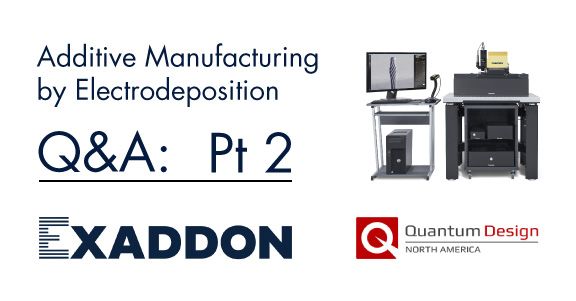
Learn more about the CERES print system and its capabilities in this Q&A series; held in conjunction with QD USA, our distributor in North America.
Part two covers print speed, electrochemistry, and comparison to two-photon polymerization (2PP). Read part one here.
What is the time limiting factor when printing? Are there possibilities to increase the movement speed?
How many voxels can be printed with one iontip? How long did it take, for example, to make the David statue?
It depends a little bit on the structure, and also the print material, object complexity, and so on. Ultimately the total possible volume of printed material is limited by the capacity of the ink reservoir in our iontip. This is filled prior to printing, and holds 1 µl of ink. The David statue, for example, it is a one-millimeter-tall object and consists of about 360,000 voxels. That remains the biggest object we have printed, and is not the size range we typically focus on.
The biggest difference to 2PP is that we print 100% pure metal
What is the challenge for the users say to create their own ink? What are the technical challenges; do you think they can do that?
Yes, that is a very good question and a very relevant question. We absolutely encourage our customers to develop their own inks. We provide inks for those people who just want to print, and we currently offer copper and gold inks as production-ready print materials.
The challenge [of developing new inks] is to find the right spot where the reduction of the metal is not too slow and not too fast. For example, the system and the electroplating speed need to work hand-in-hand together. So, with each voxel we are printing, we’re using a laser to measure the deflection of the iontip cantilever, and this has to match the speed of the system. I would say it is more an electrochemical challenge to develop new metal inks. Perhaps 70% is electrochemistry and 30% is understanding the combination of electrochemistry and our system, but all of this information we can provide.
That said, it is not something you do usually in two weeks work; you really have to spend some time on it, and electrochemistry is the main focus when developing new inks. If you want to dispense other materials [e.g. liquids], there are different topics that you have to consider, like the viscosity of the material, does it stick to the surface, is it hydrophilic or hydrophobic, etc. So, there you would need to consider many other things; there would be quite some R&D. Ultimately, if someone wants to develop the CERES system further, we are always open to discuss it and support them.
Two photon technology (2PP) can also print very tiny structures and there is a possibility for them to coat their structures with metal. How would you compare those to what you print with CERES?
The biggest difference is that we print 100% pure metal; from the core to the outside. And you can start printing at a certain location, with a strong connection to the surface of the substrate. So it's really not comparable.
With 2PP there are quite some papers published where people tried to get some metal parts in the resin and then to bake it out and to sinter it, but it's not really working [in comparison to pure metal] - it really works very well for polymers, but not for metal structures. Those who have a 2PP system and are interested in conductive materials have to coat their objects, and then they have coated polymer objects, not metal objects.
We cannot 3D print plastic polymers - we can 2D dispense them - whilst they cannot do metal 3D printing. So this is the biggest difference.
Questions? Reach out to us and learn more.
Discuss your industrial applications or fundamental research challenges
Q&A Part 2: Developing Microscale 3D Metal Printing